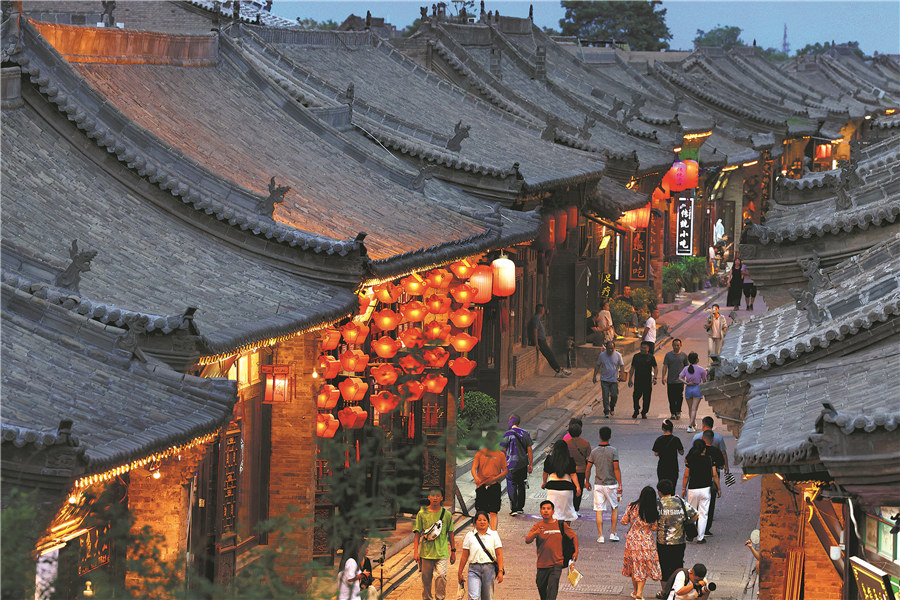

Pingyao has four major streets, eight minor streets and 72 alleys that, resembling the feet of a house centipede, are vividly called "house-centipede alleys".
"What's particularly interesting about Pingyao is that all the alleys intersect like lines on a checkerboard. Wherever you get lost, just walk ahead along one alley and you will ultimately reach a major street and find your way back," she says.
But now everything has changed. To better preserve the city, the schools, hospitals, governmental organs and many residents have left.
"It's more convenient to live outside, especially for young people who prefer living in well-equipped buildings," she says.
As many traditional courtyards have been transformed for commercial purposes, like in many other ancient cities in China, the streets of Pingyao are packed with various businesses ranging from ubiquitous photo-shooting tours, restaurants, guesthouses, local specialty shops selling items like time-honored braised beef and aged vinegar and Pingyao hand-polished lacquerware to shops selling snacks such as cakes, milk tea, cultural creative products and handmade soaps.
But Gong prefers a nostalgic lifestyle, an ancient city that breathes when more people live in those courtyards with modern facilities.
"When you stroll in the alleys, you can see cats lying in the sunshine, elderly people sitting against the walls and chatting, and people playing chess or poker or drinking tea. That's what brings the ancient city to life," she says.